Abstract
The park and ride program introduced into Abu Dhabi by the department of transportation is critical in the preservation of the environment. It is a form of transport that is being in use in many parts of the world.
The success of such a program in different cities of the world underlies the rational to introduce the system in Abu Dhabi. Many similarities, differences, benefits, and criticism have however emerged from the implementation of the park and ride system in Abu Dhabi and other parts of the world.
Despite the criticism associated with the park and ride system, many countries and cities including Oxford, and the United Kingdom have successfully benefited from the system.
In this study, the similarities and differences associated with the park and ride system in Abu Dhabi and other cities are discussed, leading to the discussion on the advantages and disadvantages of the system when used on different parts of the world.
Among the similarities discussed in the paper include the pay as you use system that is widely used in the west, the structure of the system when compared with the way it has been implemented in Abu Dhabi when compared with other cities.
Introduction
Many cities and towns in the world have suffered heavily from the adverse consequences of congestion and pollution related problems necessitating the need for the many of the countries and cities to legislate and develop strategies on different methods of addressing the congestion and pollution problems.
Studies show that new systems have been contrived and tried with success or failure in different parts of the world. One such is the park and ride system tried in the Abu Dhabi.
The park and ride concept has been in existence in many cities especially in the western world mainly because issues related to pollution and congestion was first experienced in such countries.
Abu Dhabi., being one of the growing towns in the Middle East has woken up to the reality of the effects of congestion and pollution and the scarcity of space within the town to service the space needs of the growing population.
Perhaps, the need for more space has been facilitated by the rising number of tourists visiting the Middle East and a similar demand for space.
The park and ride system developed in Abu Dhabi has significant differences and similarities with the park and ride systems in other cities of the world. One such similarity is that the parking space which is available is used on a pay as you use basis.
However, in Abu Dhabi., the pay as you use basis is significantly different form other cities in the western world. The key differences are the time one is allowed to use any space that is available.
The difference is that when one is assigned some space to use in Abu Dhabi, one is required to pay at an hourly rate one occupies the space. On the other hand, in other countries especially in the United Kingdom, one is allowed to use the space depending on the time one goes for the vehicle.
It implies that in the UK, one does not make payments at an hourly basis but can enjoy the use of space for as long as it is available for use.
On the other hand, in Abu Dhabi the charges are administered at an hourly basis and a given maximum amount of time one occupies a given space is stipulated.
That implies that violating such a requirements has associated penalties. A similar case with that of the UK exists in other western cities when compared with Abu Dhabi.
Studies by different authors show that the park and ride system has been structured in such a way that users of the system can drive their vehicles and leave them at designated places, and take the public transport system to reach the destinations.
The success of the park and ride system in Abu Dhabi is the underlying need for space which is paid for, the support offered to the department of transport by different stakeholder and the government in implementing the system, besides the driving need for space.
To understand the system and its similarities and differences, this study has focused on different towns where the system has been applied especially the UK and other parts of the world with Abu Dhabi.
The study shows that the underlying reasons for the success of the program in Abu Dhabi is an effective planning strategy, an efficient logistical program, provision of the required security, an effective plan that integrates the needs of each of the users of the system, and a complete integration of other transport teams in the planning and designing of the park and ride system.
Park and Ride System in Abu Dhabi
A report by the Department of Transport (DoT) on the concept of ‘Park and Ride’ shows a number of features that have been critical to the successful implementation of the plan. In addition, it provides details that show how the system works and the features that differentiate the park and ride system with other elsewhere.

According to the Surface transport master plan, connecting Abu Dhabi report, the report clearly shows that the park and ride system was implemented based on the Transportation Mobility Management Strategy (TMM) by department of transportation to ensure a sustainable transport system (2).
The success of the program is based on the establishment of good working relationship with the urban planning council, major stakeholder developers, and the municipalities in the designated areas of interest.
The aim of implementing the park and ride systems is to provide a sustained protection of the environment against pollution and provide a low carbon commercial system of moving people from and to different locations on an infrastructure that was developed by the government and other stakeholders (Surface transport master plan, connecting Abu Dhabi 20).
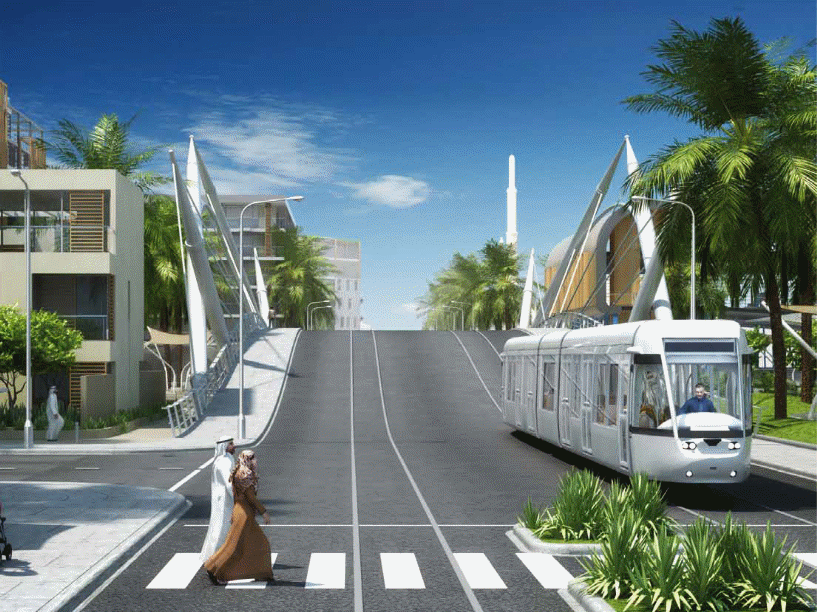
Research shows the driving force to the successful implementation of the program is the underlying vision 2030 by the government with the aim to provide a sustainable city based on the roles played by different stakeholders (Shaheen and Rodier 2).
Because different stakeholders play significant roles that are split into different categories, the role of the department of transportation is to develop and provide the users with different types of infrastructure that addresses the needs of each user.
In summary, the roles include developing infrastructure for pedestrian users, bicycles, and vehicles. In addition, the DoT regulates the flow of traffic within the city, in addition to buses, taxis, and ferries, within Abu Dhabi.
In context, the plan provides sustained solutions for the long term, short term, and medium term solutions to the problem associated with the congestion of vehicles in the city.
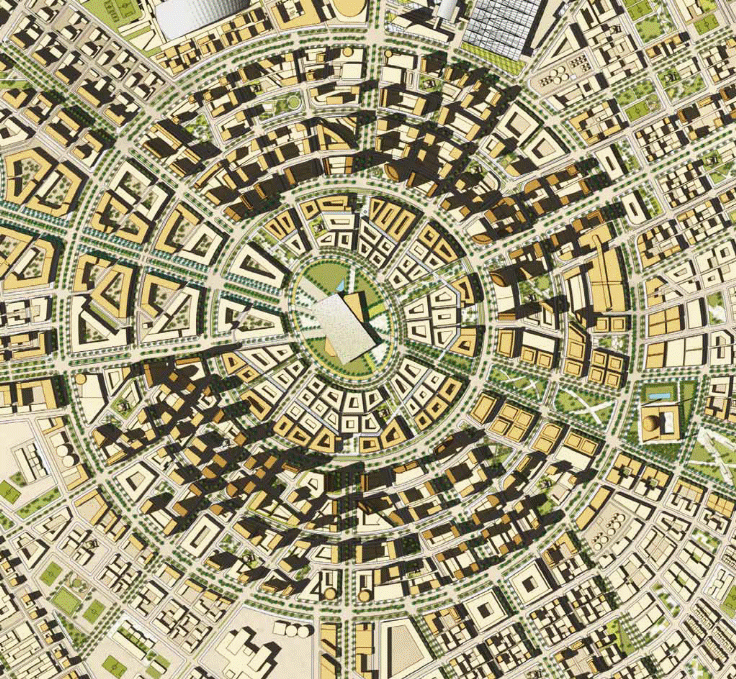
A case study for the Abu Dhabi master plan was the successful development of the transportation system that integrates the park and ride system within Abu Dhabi.
In this case, the aim was to provide the overall environmental sustainability strategy in which the plan was to reduce congestion within the city and increase the rate at which people use the public transportation system (SAIC 2)
The program
In Abu Dhabi, the park and ride system works using standard parking areas uniquely identified and designated for parking of different vehicles and depends on the category of the vehicle and the designate area (Rodier and Shaheen 12).
One such system is the Mawaqif which is based on payments made by the person using the system. According to the report, the system works on the pay as you use basis and the payment for such services are enforced throughout the week except on public holidays and Fridays (Parkhurst 2).
The system is enforced throughout the day. Parking time is automated using automatic parking meters which count the time one is supposed to use the assigned space. In context, to limit the time one uses a given space, time limits are set within which one is allowed to use a specified location.
An additional reason for using public parking space within a limited amount of time is to limit illegal use of space and to help organize the parking system.
When the time expires, the user is required to make additional payments to continue using the space (Park and Ride: Public transport 23).
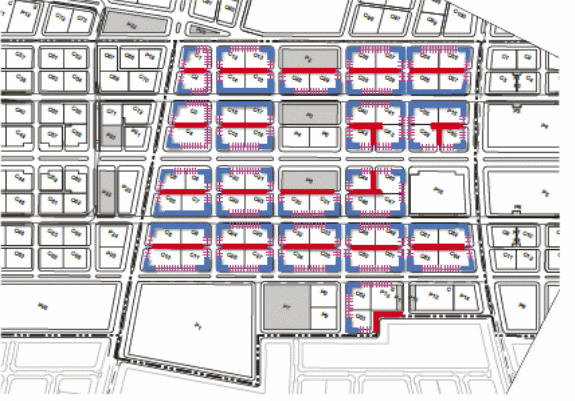
Different parking points attract different rates. Premium parking spaces are limited to 4 hours and attract while standard parking places offer limited parking time of 2 hours to a maximum of 3 hours.
It is important to add that the payment system uses hard currency, mobile payment systems, or the usage of prepaid cards.
Park and Ride locations
The report shows that two locations have been identified to provide the needs arising from the park and ride system. The locations include a site identified to lie to the south western part of the Musaffah interchange, which is in a bearing of E20/E30.
The other site identified for use is the Grand Mosque car park which has a lot of parking space. Both areas are easily accessible from any direction using the roads that link to that area.
It is important to note that different lanes have been designed and designated for different uses by vehicles with different capacities.
Park and ride comparison to other cities in UAE and the world
The park and ride system used in Abu Dhabi has similarities and differences with the park and ride systems used in other counties.
The underlying rationale for countries to integrate the park and ride system in the transport sector is to help reduce the adverse impact caused by the travelling patterns across cities and the congestion on the public transport system (Mouskos, Parker and Boile 2).
That is in addition to reducing the level of pollution, environmental degradation, and congestion caused by the transport system.
Typical examples of countries and their cities that have integrated the park and ride system in their cities include the United Kingdom and a number of cities across France, among others. An example is the use of the park and travel strategy in oxford (Morrall and Bolger 34).
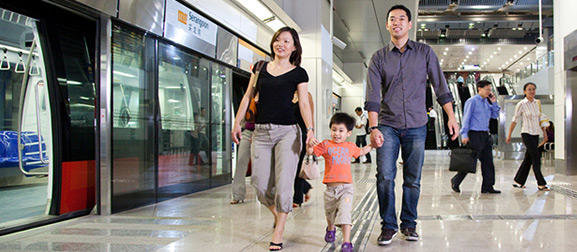
Design considerations
Similar to the Abu Dhabi system and other countries, the park and ride system are designed with a number of factors in mind (Capital District: Master Plan Summary 1).
These include the availability of space, accessibility of the parking spaces to other road and rail networks, and the amount of space available. It is important to note that parking spaces vary is space and size.
The spaces can be small and accommodate a small number of vehicles or big to accommodate thousands of vehicles.
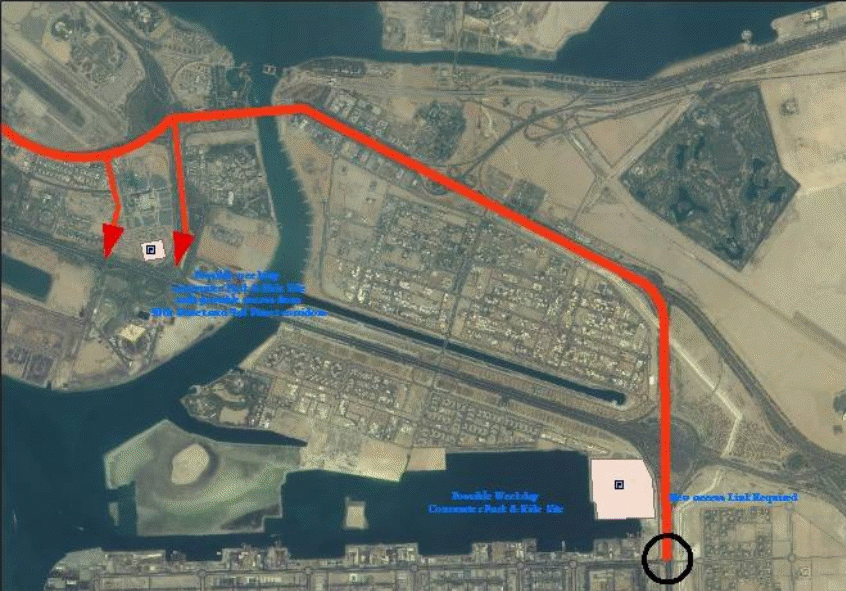
In Abu Dhabi, the park and rides system is based on a pay as you use basis of the public space while in most other countries the parking space can be provided for free.
The difference between the park and pay system between Abu Dhabi and other counter is that parking in Abu Dhabi attracts rates that are levied on the vehicle at an hourly basis while in other countries mentioned above; most of the approaches used to charge the users is based on payments that are made either at the exit or inlet points.
It is therefore important to note that once one is in the park, payment for the usage of the park must be made. It is also important to note that entry and exit points in the parks are controlled by specialized personnel (Morrall and Bolger 2).
Other areas in the cities have similarities with the park and pay system used in Abu Dhabi because one is required to pay for the use of the space at a rate determined per an hour.
In Abu Dhabi, parking meters that count the number of hours and the costs incurred in using the space are used. A similar case applies for the costs incurred when using reserved space per a given period.
In the UK for example, the park and ride system uses the park and ride bus services. The bus services operate by providing intermodal passenger journeys which relies on the private and shared mode of transportation.
The model operates on the principle that one has to park one’s private car in a designated place and use the public transport system to the destination point. It is also possible for other users to operate as cyclists or pedestrians.
In the UK, the system is viewed as part of the permanent public transport system while in Abu Dhabi, the park and ride system is a new and evolving idea. The local authorities are responsible for the design, development, and management of the public based park and ride sites.
The difference in the roles and responsibilities of designing, developing, and managing the park and ride system between the UK and Abu Dhabi is that in Abu Dhabi, the government operates the park and ride sites under the department of transportation, while in the UK, the local authorities take the sole responsibility of running the system. in addition, the park and ride sites are intended to be used by the community that uses cars as a mode of travel, a similar case with Abu Dhabi.
In addition, similar to Abu Dhabi and the UK, users include pedestrians, cyclists and car owners (Al-Kazily 2).
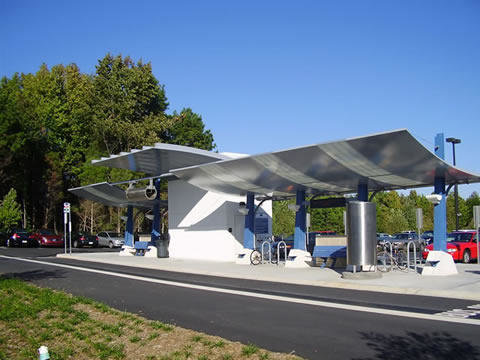
Structure
The structure of the park and ride system used in Abu Dhabi has significant similarities with that used in European countries.
The structure is defined by interconnections of car parks and other parking spaces to address differentiated needs of the users (Capital District: Master Plan Summary 4).
Typically, the park and ride systems of the world are similar to the Abu Dhabi ‘park and ride’ system because of the structure and purpose of the systems.
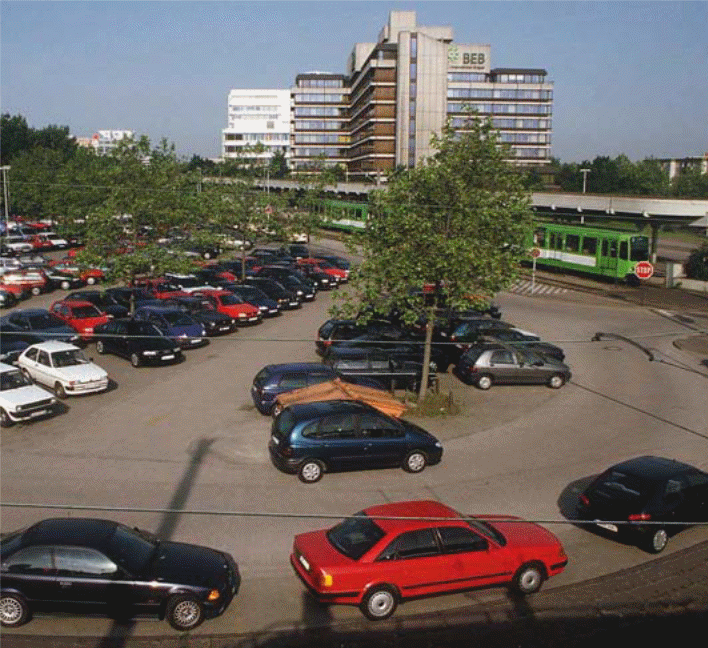
Differences in the systems with the Abu Dhabi system include the provision of dedicated systems while the Abu Dhabi does not provide dedicated park and ride schemes.
For the rest of the world, the park and ride system consists of dedicated bus park and ride system which offers facilities dedicated to users of the bus transport system.
A typical example is the bus park and ride system that has been in existence in the UK since its inception in the 1960s at experimental level with the full operation within the Oxford region beginning in 1973 (Trout and Ullman 23).
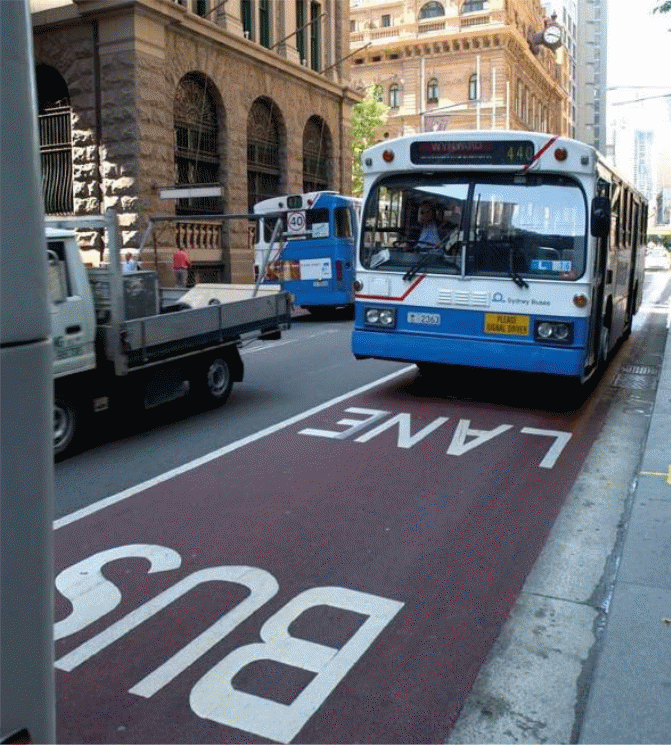
Other ride and park systems provided in the world include the railway park and ride system which is also used in the UK, which operates across many cities in the United Kingdom.
In addition, there is the bike park and ride scheme which allows commuters to use racks or boxes near public transport terminals whose functionality is based on the ticket and fare system (Parkhurst 3).
Other schemes used under the park and ride system are the car share park and ride system. The system encourages commuters to embrace the concept of sharing high occupancy cars to meet the goal of the park and ride scheme (UTM 2).

Benefits and Criticism
Different research studies show that the success of the program is designed and intended to bring about a number of benefits to Abu Dhabi.
One of the benefits of using the park and ride program that have been experienced in other parts of the world and which have similarly been observed in Abu Dhabi include the ability of the town management system to avoid the difficulties associated with lack of parking space (Turnbull, Evans and Levinson 23).
In addition, the charges incurred by the users of the system as levies charged on the users of the system generate revenue to the council.
The benefits of avoiding the stress associated with driving in congested areas and under traffic jam have been alleviated by the use of parking space that is provided at the park and ride points (Wambalaba and Goodwill 2).
The difference between other cities in the world and Abu Dhabi is that the rates are significantly different and the mode of levying charges also varies.
In context, the rates in other parts of the world such as in the UK are lower than the rates charged at Abu Dhabi (Capital District: Master Plan Summary 2).
The differences are because in the UK, specific areas are designed and designated as park and ride sites and the system used to levy charges on users is also significantly different from that used in Abu Dhabi.
In the UK, users incur charges at the entry and exit points when they are either making an entry into the park and ride site or when exiting from the point.
The benefit here is that the user enjoys the liberty of using a parking space for a long as the vehicle is parked at the same point irrespective of the duration. On the other hand, a different scenario prevails in Abu Dhabi.
In the city of Abu Dhabi, the user is charged per an hour for a maximum of 24 hours, analytically making the park and ride system in Abu Dhabi one of the most expensive in the world (Capital District: Master Plan Summary 2).
The benefits that commuters enjoy in other countries with similar park and ride systems include service to commuters who live several kilometers from the city center.
The Abu Dhabi ‘Park and ride’ system also offers commuters similar benefits to commuters who operate from distance areas from the city.
In addition, other cities of the world that enjoy the benefits associated with the park and ride system provide similar benefits enjoyed by the Abu Dhabi ‘park and ride’ system.
Criticism
Research shows that when the park and ride system was introduced in different cities across different countries of the world, the aim was to reduce congestion in city roads and to minimize the impact on the environment.
Weaknesses in the system had not been assessed (Land Transport Authority 2).
According to research reports, many cities of the world have realised a balance between the benefits and disadvantages associated with the park and ride system.
In context, the problem with the park and ride system has been observed in Sweden, making the system inefficient because of the level of congestion and lack of funds to run the entire system.
However, the Abu Dhabi ‘park and ride’ system might not suffer similar problems because the system is designed to accommodate users based on a pay as you use system.
In this case, the pay as you use system spans different types of users in addition to providing additional revenue for the city in addition to reducing the number of private vehicles that ply the city.
Conclusion
In conclusion the motivation for the study is to establish the similarities and differences that exist between the park and ride system used in Abu Dhabi and other cities in the world.
The results from the study show significant differences and similarities between the park and ride system used in Abu Dhabi and other parts of the world.
In addition, the system report shows that using the use and pay system or the pay and use system is a critical component in providing the revenue needed for the upkeep of such systems.
Findings underlie the park and ride system developed jointly by the government and other stakeholders and integrated into the commuter system of the Abu Dhabi forms a crucial component that is used to reduce congestion, create sustainable income, provide a system for reducing pollution, and minimizing environmental impact.
The study shows that park and ride system of the Abu Dhabi has similarities and differences between different cities of the world.
The park and ride system used in Abu Dhabi is based on pay and use system that enables each user to enjoy the parking services at a fee and is limited to 2 and 4 hourly charges with a 24 hour limit, subject to renewal, as the park and ride systems in the world.
It is important to note in context of this report that different ticketing systems are used because of different based on the demand and location of the space. In most cases, the spaces available for use in the system are designated to provide centralized and fair distribution of the services.
Typically, the structure of the system is determined and decided by the level of accessibility of the park and ride system to all and the convenience people find in accessing the parking space.
The benefit associated with the use of the system in addition to allowing people with different capabilities to use the system adds to the advantages of using the system.
It is also important to note that different cities and towns in the western nations have automated ticketing systems similar to the one developed and integrated into the park and ride Abu Dhabi Park and ride system.
The success of the program in Abu Dhabi and other parts of the world depends on capability of the staff members who run the system.
A well organized and coordinated staff using an interactive information system developed and integrated into the system provides the staff with the tools and capabilities to handle the traffic efficiently.
That is in addition to the cooperation afforded the staff by the law enforcement agencies and the government.
Works Cited
Al-Kazily, Joan, “Analysis of Park-and-Ride Lot Use in the Sacramento Region,”Transportation Research Record 1321, TRB, 40.2 (1991): 835-62. Print.
Capital District: Master Plan Summary. Web.
Land transport Authority, Park & Ride, 2013. Web.
Morrall, John and Dan Bolger, “The Relationship Between Downtown Parking Supply and Transit Use,” ITE Journal.1 (1996), pp. 32-36. Print.
Morrall, John and Dan Bolger, “Park-and-Ride: Canada’s Most Cost Effective TDM Strategy”, Transportation Association of Canada Annual Conference, 1996. Print.
Mouskos, Kyriacos C, Neville Parker and Maria Boile, “Technical Solutions to Overcrowded Park and Ride Facilities”, FHWA-NJ-2007-011, Bureau of Research, New Jersey Department of Transportation, 2007. Print.
Park and Ride: Public transport, 2013. Web.
Parkhurst, Graham, “Influence of Bus-Based Park and Ride Facilities on Users’ Car Traffic,” Transport Policy, 7. 2 (2000): 159-172. Print.
Rodier, Caroline J. and Susan A. Shaheen. “Transit-Based Smart Parking: Early Field Test Results”, Transportation Research Board Annual Meeting, 35.1 (2006): 37-56. Print.
SAIC, “Evaluation of Transit Applications of Advanced Parking Management”, Research and Innovative Technology Administration (RITA) United States Department of Transportation, 2.3 (2008):23-24. Print.
Shaheen, Susan and Caroline Rodier, “Smart Parking Management to Boost Transit, Ease Congestion: Oakland, California Field Test Shows Promise,” TR News 251, Transportation Research Board, 5.4 (2007): 23-67. Print.
Surface transport master plan, connecting Abu Dhabi. Web.
Trout, Nada D. and Gerald L. Ullman, “A Special Event Park-and-Ride Shuttle Bus Success Story,” ITE Journal. 8 (1997): 38-43. Print.
Turnbull, Katherine, John Evans and Herbert Levinson, “Park-And-Ride/Pool: Traveler Response to Transport System Changes, Chapter 3; Report 95,” Transit Cooperative Research Program; Transportation Research Board, 56.8 (2004): 3-6. Print.
UTM, “Park-And-Ride Survey,” Urban Transportation Monitor, 17.11 (2003):2-5. Print.
Wambalaba, Francis and Julie Goodwill, “Evaluation of Shared Use Park & Ride Impact on Properties”, National Center for Transit Research, University of South Florida, 50.3 (2004): 3-8. Print.